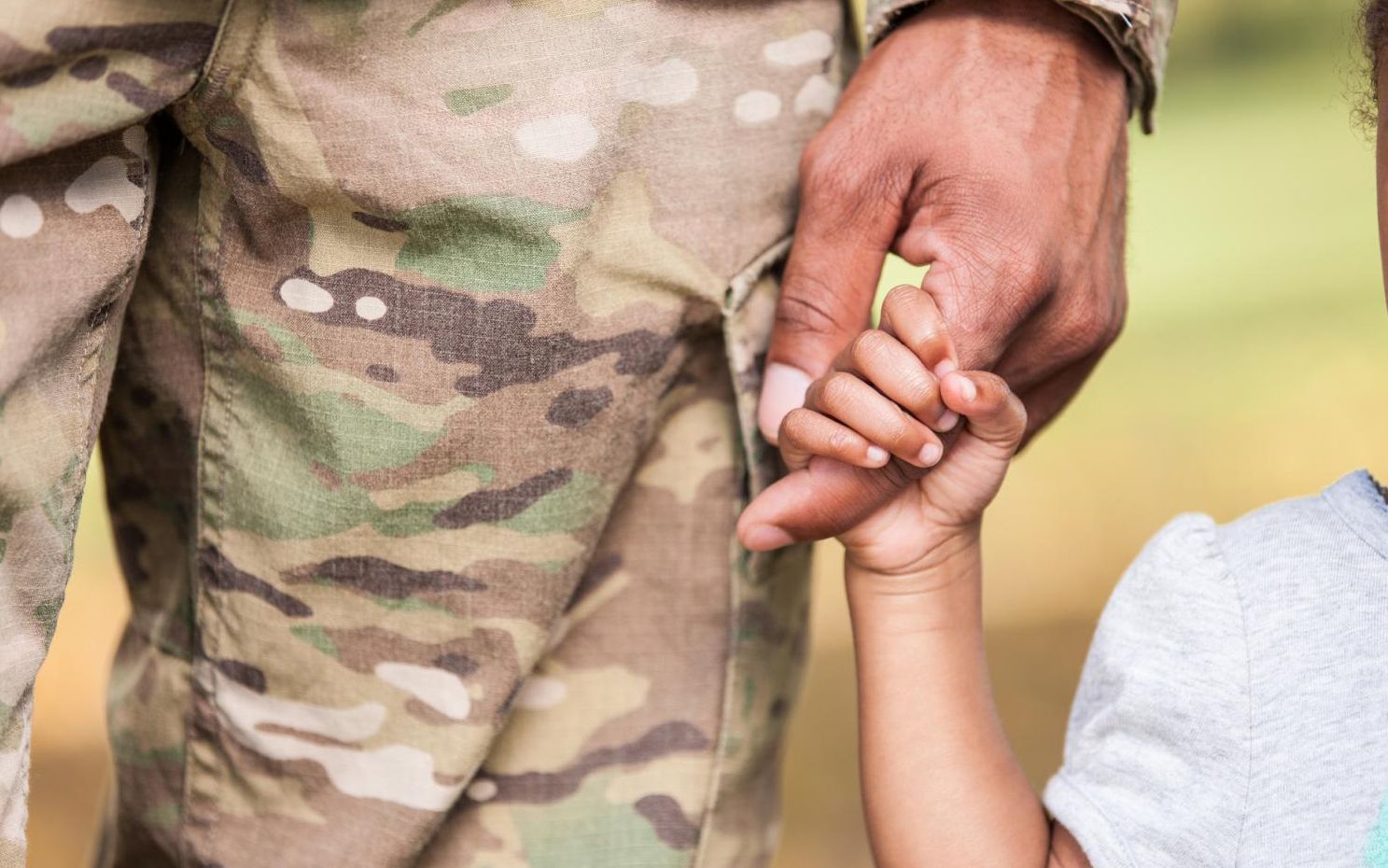Can parents help prevent risky cannabis and alcohol use by college students?
$2.8 million NIAAA grant to fund study of a parent-based intervention for college-bound students

dad-teen-talking-AdobeStock_379188008-Lightfield-Studios-PRC
A research team led by PRC affiliate faculty member Rob Turrisi is testing an intervention in the form of an electronic handbook for parents that guides them through having meaningful discussions on cannabis and alcohol use with their college-bound children. Photo credit: Adobe Stock/LIghfield Studios
December 14, 2022
Cannabis use by college students is on the rise, causing concern among substance use experts. In 2020, 44% of college students reported using marijuana in the past year, compared to 38% in 2015, according to the National Institute on Drug Abuse. Penn State researchers are testing an intervention designed to help parents talk with their college-bound teens about cannabis and alcohol use, with support of a $2.8M, 5-year award from the National Institute on Alcohol Abuse and Alcoholism.
In a randomized, controlled trial, the research team will provide an electronic handbook to approximately 1000 parents whose children will attend a large, northeastern university, said Rob Turrisi, professor of biobehavioral health and the study’s principal investigator. The handbook guides parents through having meaningful discussions on cannabis and alcohol use with their children.
Turrisi wants all parents to know that cannabis is more potent than in previous decades and has the potential to cause more harm.
“When today’s parents of teens were in college, they might use cannabis and get a buzz. Now, due to the much higher potency, cannabis use could result in impaired cognition and self-control, anxiety, depression and dependence. The biological and psychological effects are very different.”
The effects of cannabis are also different for males and females, Turrisi said. Emily Ansell, associate professor of biobehavioral health and co-investigator on the study, is conducting groundbreaking research in this area.
“Dr. Ansell’s research shows that females may experience more acute effects from cannabis which in turn make them more at risk for developing hazardous cannabis use,” Turrisi said. “While many people report using cannabis to deal with stress, Dr. Ansell’s research has shown that females are more vulnerable to developing problematic use if they use for stress and co-use with alcohol.”
The research team will follow up with parents and students at three, six and nine months after the intervention to evaluate the efficacy of the intervention, how it impacted the behavior of students and parents, and determine subgroups of participants for whom the intervention worked well or did not work well, to inform future interventions.
The intervention is relatively low-cost, easy to implement, and is designed to be widely disseminated when the study is complete, Turrisi said.
A pilot study of the intervention yielded promising results, as students were less likely to engage in cannabis use post-intervention. Additionally, a survey of 40 college health administrators found that all 40 would be interested in using the new handbook.
The handbook is adapted from “A Parent Handbook for Talking to College Students About Alcohol,” which was developed by Turrisi and is listed as a model prevention resource at NIAAA’s College Alcohol Intervention Matrix and in the U.S. Surgeon General’s Report as meeting rigorous criteria to be considered “efficacious.”
Kimberly Mallett, research professor at the Edna Bennett Pierce Prevention Research Center is co-principal investigator on the study. The co-investigators are Ansell and Michael Russell, Penn State assistant professor of biobehavioral health. Collaborators include Susan Tapert, professor of psychology at the University of California San Diego; Mary Larimar, professor of psychology at the University of Washington; Michael Hecht, Penn State distinguished professor emeritus and President of REAL Prevention; Megan Moreno, professor of pediatric medicine at the University of Wisconsin; Megan Patrick, research professor at the University of Minnesota; and Helene White, professor emerita of sociology at Rutgers University.
Can parents help prevent risky cannabis and alcohol use by college students?
$2.8 million NIAAA grant to fund study of a parent-based intervention for college-bound students

dad-teen-talking-AdobeStock_379188008-Lightfield-Studios-PRC
A research team led by PRC affiliate faculty member Rob Turrisi is testing an intervention in the form of an electronic handbook for parents that guides them through having meaningful discussions on cannabis and alcohol use with their college-bound children. Photo credit: Adobe Stock/LIghfield Studios
December 14, 2022
Cannabis use by college students is on the rise, causing concern among substance use experts. In 2020, 44% of college students reported using marijuana in the past year, compared to 38% in 2015, according to the National Institute on Drug Abuse. Penn State researchers are testing an intervention designed to help parents talk with their college-bound teens about cannabis and alcohol use, with support of a $2.8M, 5-year award from the National Institute on Alcohol Abuse and Alcoholism.
In a randomized, controlled trial, the research team will provide an electronic handbook to approximately 1000 parents whose children will attend a large, northeastern university, said Rob Turrisi, professor of biobehavioral health and the study’s principal investigator. The handbook guides parents through having meaningful discussions on cannabis and alcohol use with their children.
Turrisi wants all parents to know that cannabis is more potent than in previous decades and has the potential to cause more harm.
“When today’s parents of teens were in college, they might use cannabis and get a buzz. Now, due to the much higher potency, cannabis use could result in impaired cognition and self-control, anxiety, depression and dependence. The biological and psychological effects are very different.”
The effects of cannabis are also different for males and females, Turrisi said. Emily Ansell, associate professor of biobehavioral health and co-investigator on the study, is conducting groundbreaking research in this area.
“Dr. Ansell’s research shows that females may experience more acute effects from cannabis which in turn make them more at risk for developing hazardous cannabis use,” Turrisi said. “While many people report using cannabis to deal with stress, Dr. Ansell’s research has shown that females are more vulnerable to developing problematic use if they use for stress and co-use with alcohol.”
The research team will follow up with parents and students at three, six and nine months after the intervention to evaluate the efficacy of the intervention, how it impacted the behavior of students and parents, and determine subgroups of participants for whom the intervention worked well or did not work well, to inform future interventions.
The intervention is relatively low-cost, easy to implement, and is designed to be widely disseminated when the study is complete, Turrisi said.
A pilot study of the intervention yielded promising results, as students were less likely to engage in cannabis use post-intervention. Additionally, a survey of 40 college health administrators found that all 40 would be interested in using the new handbook.
The handbook is adapted from “A Parent Handbook for Talking to College Students About Alcohol,” which was developed by Turrisi and is listed as a model prevention resource at NIAAA’s College Alcohol Intervention Matrix and in the U.S. Surgeon General’s Report as meeting rigorous criteria to be considered “efficacious.”
Kimberly Mallett, research professor at the Edna Bennett Pierce Prevention Research Center is co-principal investigator on the study. The co-investigators are Ansell and Michael Russell, Penn State assistant professor of biobehavioral health. Collaborators include Susan Tapert, professor of psychology at the University of California San Diego; Mary Larimar, professor of psychology at the University of Washington; Michael Hecht, Penn State distinguished professor emeritus and President of REAL Prevention; Megan Moreno, professor of pediatric medicine at the University of Wisconsin; Megan Patrick, research professor at the University of Minnesota; and Helene White, professor emerita of sociology at Rutgers University.
Related People
Related People











